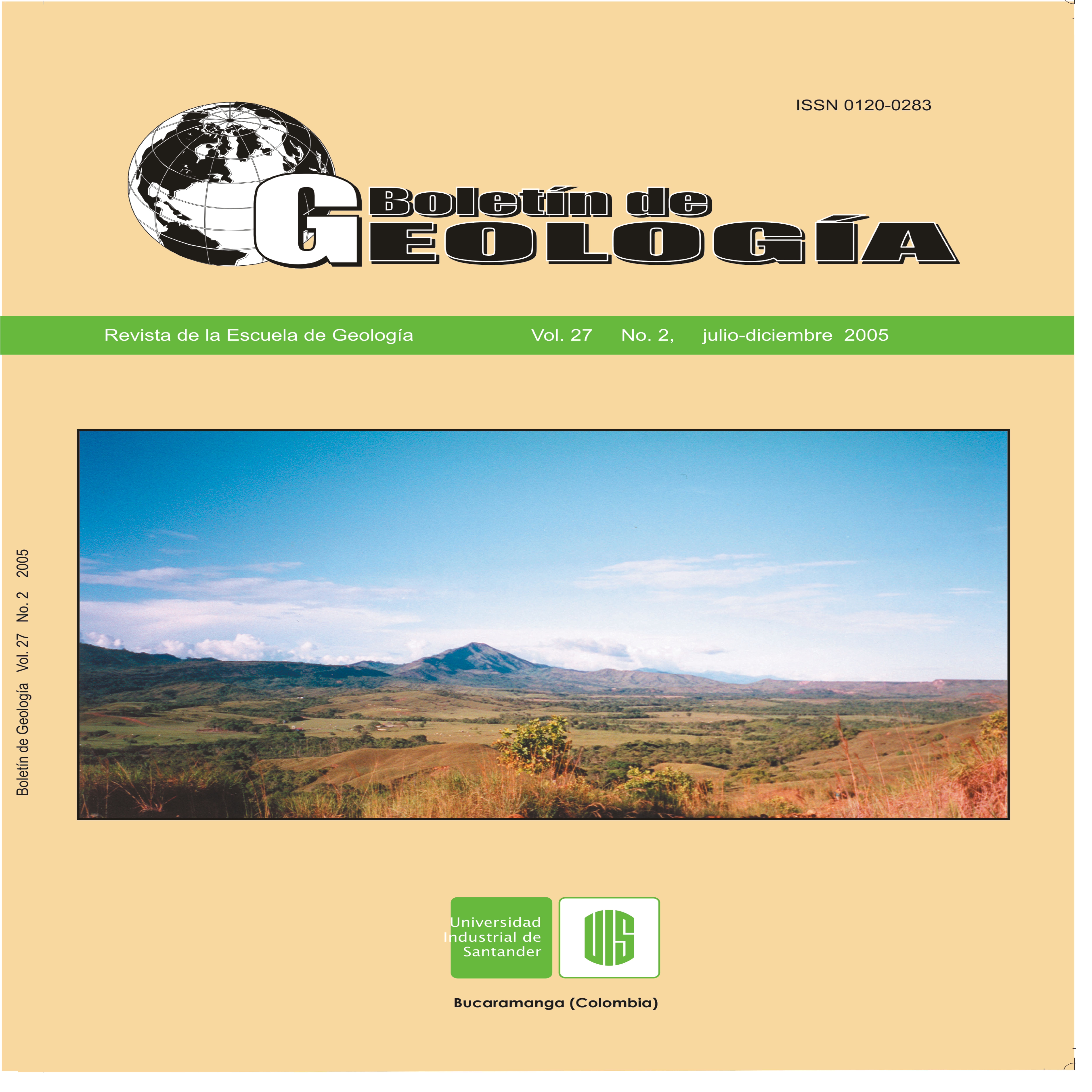PALEOMAGNETISMO Y MINERALOGÍA MAGNÉTICA EN ROCAS DE LA FORMACIÓN SALDAÑA Y UNIDADES CRETÁCICAS SUPRAYACENTES EN LA PARTE NORTE DEL VALLE SUPERIOR DEL MAGDALENA, COLOMBIA
Cómo citar
Resumen
Rocas pertenecientes a las formaciones Saldaña (Triásico Superior-Jurásico Inferior), Yaví y Alpujarra (Aptiano) en el sector Norte del Valle Superior del Magdalena se desmagnetizaron por los métodos térmico y de campo alterno con el fin de aislar componentes de magnetización y establecer su edad relativa a partir de pruebas de campo (horizontalización de capas, prueba del contacto y discordancia). Análisis de mineralogía magnética permitieron definir los minerales magnéticos que registran dichos componentes. En estas unidades se logró aislar tanto el componente que registra la dirección del dipolo actual, así como componentes estables (característicos y primarios) de magnetización correspondientes a la edad de formación de cada unidad. El componente característico de la Fm. Saldaña, portado principalmente por magnetita, se
aisló confiablemente en Olaya Herrera (D=179.9 I=7.1 N=8 k=17.19 α95=13.7), en donde se documentan rotaciones de bloques sentido anti-horario de 43±29º previo a la acumulación de la Fm. Yaví. El componente característico de la Fm. Yaví se aisló en tobas y lodolitas en el área de Alpujarra y su dirección (D=5.2 I=6.2 N=7 k=40.15 α95=9.6) sugiere un tiempo de magnetización pre-deformación de la Fm. Yaví. Hematita y magnetita son los minerales magnéticos que llevan este componente en la Fm. Yaví.
Palabras claves: Paleomagnetismo, Formación Saldaña, Formación Yaví, Triásico-Jurásico, Valle Superior del Magdalena
Descargas
Referencias
Barber, R., Chavez, F. (1991). Regulations of primaryproduction rate in the equatorial Pacific. LimnologyOceanography, Vol. 36, pp. 1803-1815
Broecker, W.S., Peng, T-H. (1982). Tracers in the Sea.Eldigio press, Lamont-Doherty Geological Observatory,New York, 690 p.
Capone, D., Zehr, J., Paerl, H., Bergman, B., Carpenter,J. (1997). Trichodesmium, a globally significantmarinecyanobacterium. Science, Vol. 276, pp.1221-1229
Carlson, C., Bates, N., Hansell, D., Steinberg, D. (2001).Carbon Cycle En: Encyclopedia of Ocean Sciences.Elsevier Science Publishers B.V, New York, pp. 390-400
Centro Control Contaminacion del Pacifico (CCCP) 2002.Compilación Oceanográfica de la Cuenca PacificaColombiana. 109 p
Chávez, F., Barber, R. (1987). An estimate of newproduction in the equatorial Pacific. Deep-Sea Research,Vol.34, Nº 7, pp. 1229-1243
Chávez, F., Strutton, P., Friederich, G., Feely, R., Feldman,G., Foley, D., McPhaden, M. (1999). Biological andchemical response of the equatorial Pacific Ocean to the1997-98 El Niño. Science, Vol. 286, pp. 2126-2131
Chester, R. (1999). Marine Geochemistry. 2ª Edición.Blackwell Publishing. 506 p
Corredor, J., Morell, J. (2001). Seasonal variation ofphysical and biogeochemical features in eastern Caribbeansurface water. Journal of Geophysical Research, Vol. 106(C3), pp. 4517-4525
Da Cunha, L., Le Querre, C., Buitenhuis, E., Giraud, X.,Ludwig, W. (2004). Potential role of rivers and coastalareas on global ocean biogeochemistry. GlobalBiogeochemical Cycles (en preparación).
Dugdale, R., Wilkerson, F. (1998). Silicate regulation ofnew production in the equatorial Pacific upwelling. Nature,Vol. 391, pp. 270- 273.Dugdale, R., Wilkerson, F. (2001). Sources and fates ofsilicon in the ocean: the role of diatoms in climate andglacial cycles. Scientia Marina, Vol. 65, Nº 2, pp. 141-152.
Farrell, J., Prell, W. (1989). Climatic change and CaCO3preservation: an 800000 year bathymetric reconstructionfrom the central equatorial Pacific Ocean.Paleoceanography, Vol. 4, pp. 447-466
Feely, R., Sabine, C., Takahashi, T., Wanninkhof, R.(2001). Uptake and storage of carbon dioxide in theocean: the global CO2 survey. Oceanography, Vol. 14,Nº 4, pp. 18 -32
